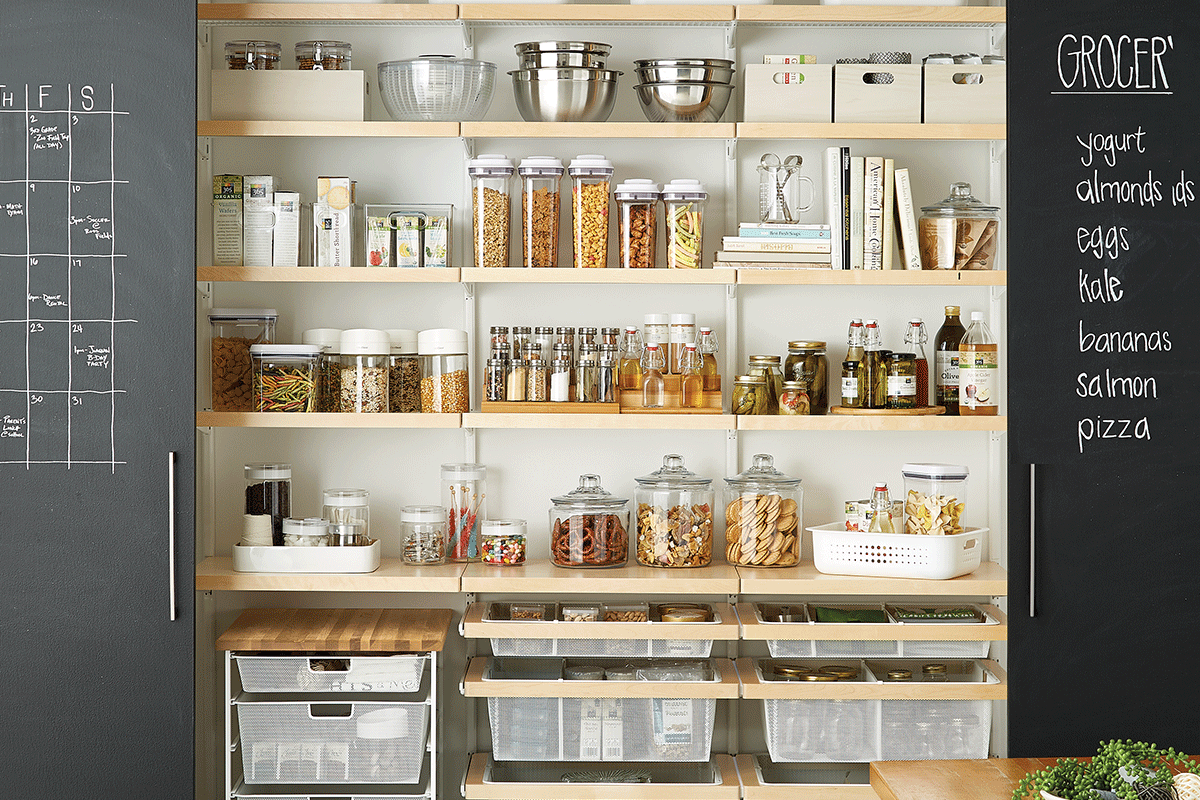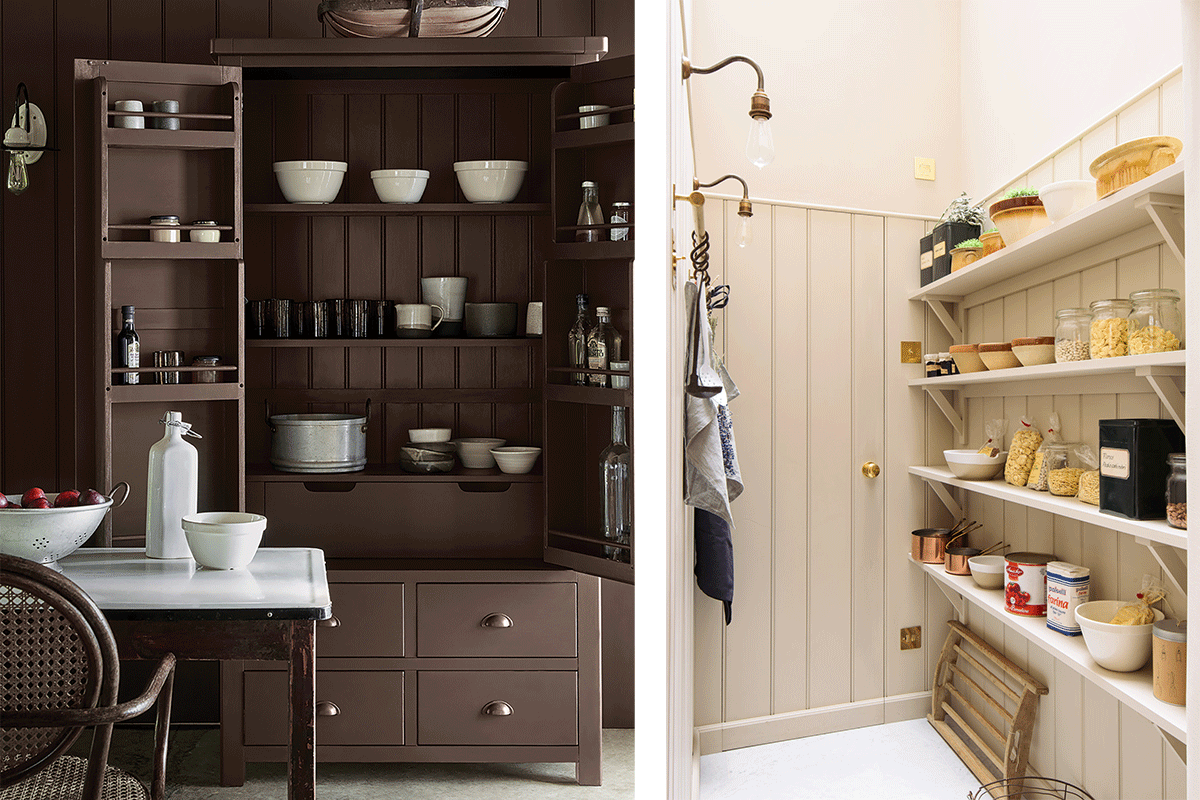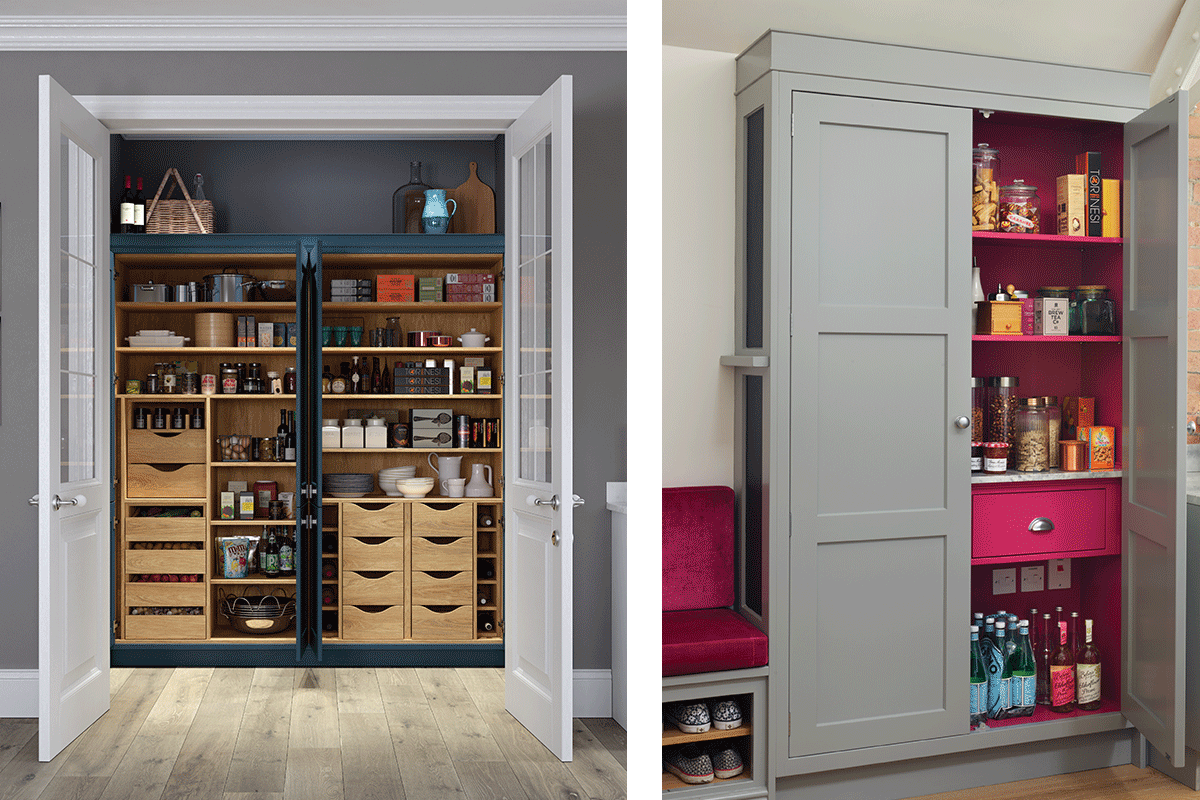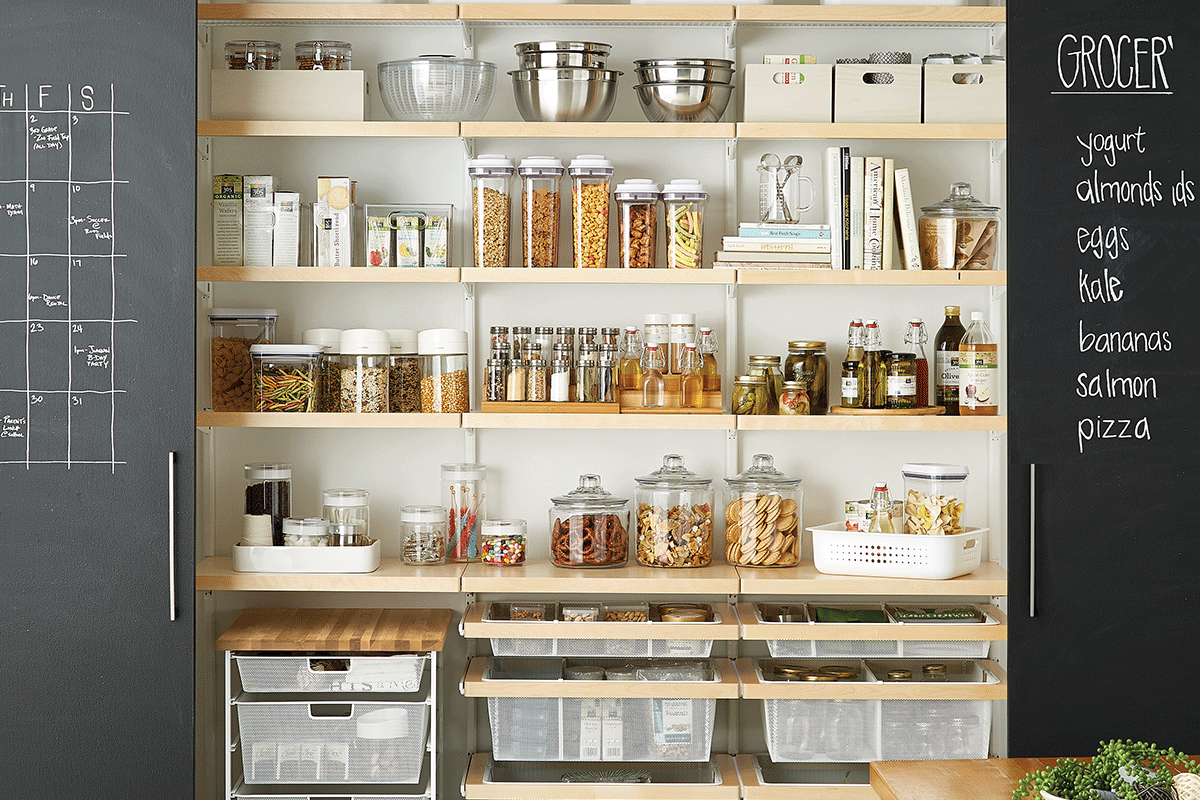Tasty storage solutions for your ingredients

Words Miriam Methuen-Jones
Given the choice, would you rather have a walk-in wardrobe or a walk-in pantry? Before the seismic events of 2020, the answer would have been a no-brainer for most of us. Who could resist the thought of beautifully organised clothes? Now, though, with so much more time to cook from scratch and a general focus on the slower aspects of life, not to mention celebrity chefs giving us the goods with online tutorials, the value of a pantry is suddenly a lot more obvious. With fewer options for going out, there’s less need for fancy outfits or a place to hang them. In contrast, our kitchen cupboards are at full capacity. This is nothing to do with hoarding; rather, it’s all the bits and bobs left over from new recipes. (What else does one use vanilla pods for, beyond cake?) Proper storage would be so helpful.
Pantries and larders were commonplace before the days of refrigeration. The pantry was a place for non-perishable foodstuffs, such as flour, sugar and preserves, along with dishes and linens. These days, it’s usually a walk-in space – a small (or large) cupboard with built-in shelving. Larders were cool rooms dedicated to foodstuffs that don’t last – eggs, milk and so on. In the Middle Ages, it was common to preserve food in lard; happily for our cholesterol levels, only the name has survived. The modern version of a larder is technically a fridge, but we often use the term to refer to pull-out drawers full of condiments or ingredients.


With the basics covered, where do you begin? Well, as ever, it depends on your space and your needs. How do you use the kitchen? Does it work practically? Who else in the house cooks and bakes? Take into account, too, bigger is not necessarily better. A walk-in area looks impressive, but if after fifteen minutes of hunting you still can’t find the cloves, it defeats the purpose. Consider instead an integrated cupboard larder like the options above. Because the shelves aren’t deep, everything will be visible and accessible when the doors are open.


If you can’t sacrifice a cabinet but do have excess room elsewhere (perhaps an underused utility area), there’s scope for storage. Plan the amount of shelving (being mindful of heights – spaghetti, for instance, is pretty tall when it’s standing upright) you’ll require in order to house all your ingredients. Appliances, pots and serving pieces can also be stored out of the way here. Create a clutter-free, stress-less space that’s ordered and pleasing to the eye with rows of receptacles storing those day-to-day essentials within easy reach.
Speaking of which, the time-honoured glass Kilner jars make it simple to find exactly what you need. But you can always stray from the traditional or mix it up with modern touches. Pick up enamel tins in different shades and swap the lids about for contemporary colour blocking. Use baskets for vegetables, sweetie jars for treats, recycled vases for tea bags. Scour vintage shops and markets to find one-off storage. There’s never really any need for uniformity, but this is especially true when it’s tucked away behind a closed door.


Alison Williamson of Perthshire-based cabinetmakers Birkwood, who specialise in made-to-measure kitchens using durable plywood, reckons the pandemic has changed our storage habits: “Rising demand for bespoke kitchen solutions, with worktop space maximised and small appliances out of view, is all about creating a sense of calm. We’re converting nooks and crannies often found in older properties into usable storage spaces – just think of the Edinburgh press, with its floor-to-ceiling potential. Using drawers rather than standard cabinets is a more efficient way to store for dry goods, jars and tins, and plates and crockery too.”
As we all try to be smarter with food, eating better and wasting less, it’s time to upgrade our surroundings to suit the new order of the day. Start by emptying the takeaway-menu drawer and filling it with fresh, fab ingredients.
“Shortages of key ingredients led us to buy in bulk and we learned to make the most of leftovers. When restaurants closed, we improved our cooking skills – and of course we baked like crazy to lift the mood.” – Alison Williamson, Birkwood







